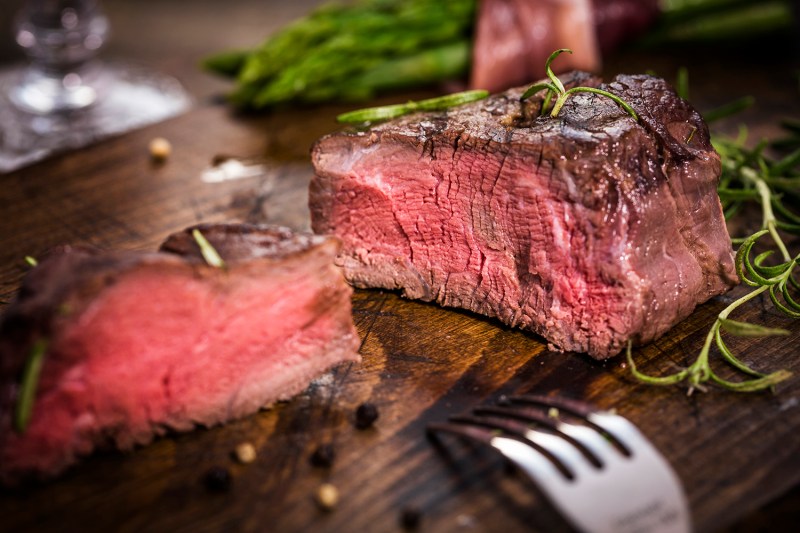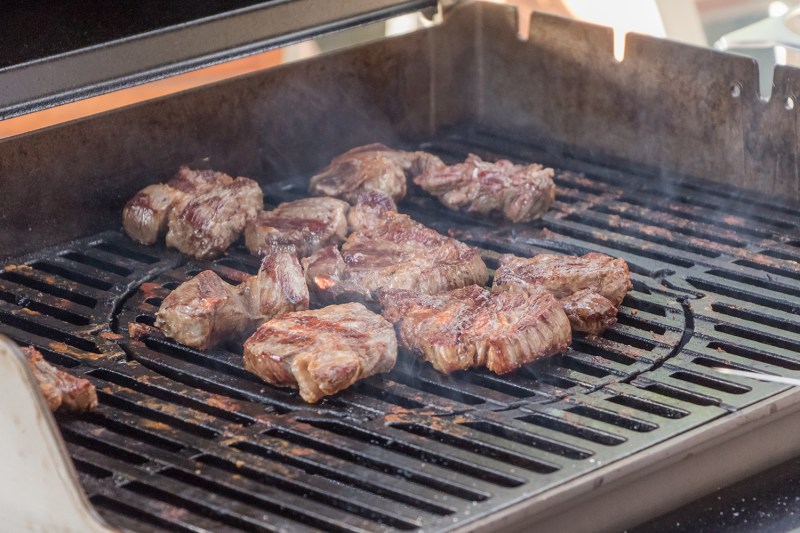
The weather is changing, and your grill beckons. Longer, warmer days beg for full propane tanks and your favorite meats and vegetables thrown atop the flame.
One of the most iconic cuts within the wide world of animal protein is filet mignon. This delicate steak is prized for both its texture and its scarcity. Simply put, there’s just not much of it per cow. The tender cut is pulled from the smaller front end of the tenderloin, around the animal’s upper midsection. It tends to show up as a round cut, which makes sense as it runs around the cow’s spine.
Grilling filet mignon

Let’s get into the fun part: how to grill filet mignon — the coveted bit of beef. Dan Thiessen is the managing partner at Walla Walla Steak Company, easily one of the best steak houses on the west coast. The restaurant also shares a space with sibling business and esteemed operation Crossbuck Brewing. Thiessen is an industry veteran, having studied at the Culinary Institute of America in New York before teaching the culinary arts at both the Art Institute of Seattle and Walla Walla Community College.
“With gas, you need a different approach,” began Thiessen. “At the end of the day, a gas grill is an oven.” He said that while grilling with propane, the internal chamber of the grill can reach temperatures of 550-600 degrees. With that in mind, grilling filet mignon, which is something that’s delicate, won’t take too much time. But you want to do it right.
We’ve got Thiessen’s method below, which will have to be tweaked this way or that depending on the size of your fillet. It’s a great template for cooking this particular cut but requires so more context to truly perfect. For instance, Thiessen touted the importance of bringing your steak to temperature before grilling. It will take more heat and time to grill a steak straight out of the fridge and you may lose some of that prized texture en route.
After grilling, resting is key. “The bigger the meat, the longer you rest,” Thiessen explained. It allows even heat and flavor distribution throughout the cut. It also has to do with the carryover effect, which is all about how the steak continues to heat even after it’s pulled from the heat source. “The outside of the steak is warmer than the inside,” Thiessen says. “And what you’re looking for, if medium-rare is what you’re after, is a top-to-bottom temperature of 130.”
If you can’t get your hands on filet mignon, Thiessen suggested a cut called the shoulder clod (sometimes called petite tenderloin). If you do use a filet, he suggested some marination or an infused oil of some kind — think herbs like rosemary and thyme. As beloved as filet mignon is, it’s not the most flavorful cut. “The more a muscle is used, the more connective tissue and flavor you get,” Thiessen said. “A fillet is very lean with not a lot of fat. It’s a muscle that’s not used much.”
Method for grilling filet mignon on a gas grill
- Sear the steak on high for about 2 minutes.
- Flip the steak and turn the heat down to medium or medium-low. Leave the door open to allow some heat to escape and cook for 2-3 minutes.
- Flip the steak a final time and offset the cut at 45 degrees to achieve expert grill marks (what Thiessen dubbed “diamond-plate”).
- Pull the meat a tad early to account for the carry-over effect. In other words, if you’re going for medium-rare (130 degrees Fahrenheit), remove the steak at 126 degrees Fahrenheit.
- Let the meat rest for several minutes, recheck the temperature, and dig in.
What are the best accompaniments for filet mignon?

Because filet mignon is so tender and buttery and gives you a flavorful taste, you want to pair it with sides that complement it without overwhelming it. Creamed spinach is a classic steakhouse side dish that’s rich but still light enough to not overpower the filet mignon. Sauteed mushrooms are another great option. You can saute the mushrooms with butter, garlic, and herbs for a simple and flavorful accompaniment. Add baked or mashed potatoes to your meal for a hearty and satisfying side dish that goes well with any kind of steak, including filet mignon. Lastly, roasted vegetables are a healthy and flavorful side dish perfect for spring and summer meals. Some good options for grilling with filet mignon include asparagus, broccoli, Brussels sprouts, and carrots.
Editors' Recommendations
- How to cook salmon: A complete beginner’s guide
- How to dry fresh basil: 5 ways to preserve this essential herb
- How to make The Last Word cocktail, a gin classic from another era
- How to brunch like the French with lobster croissant and champagne
- Your guide to the pescatarian diet for healthier living


